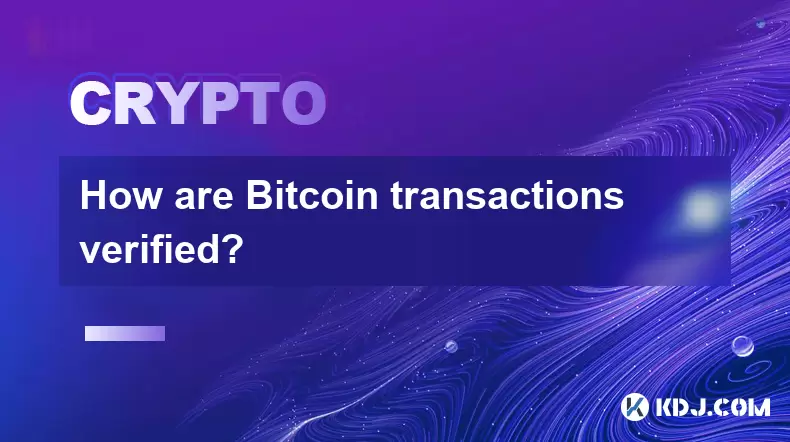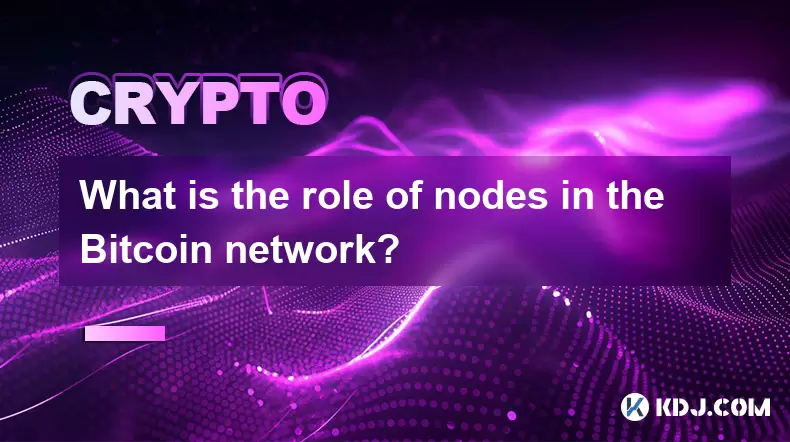-
 Bitcoin
Bitcoin $116400
-0.36% -
 Ethereum
Ethereum $4033
3.40% -
 XRP
XRP $3.302
-1.26% -
 Tether USDt
Tether USDt $1.000
-0.02% -
 BNB
BNB $796.1
1.67% -
 Solana
Solana $177.8
1.89% -
 USDC
USDC $0.9999
0.00% -
 Dogecoin
Dogecoin $0.2314
4.09% -
 TRON
TRON $0.3381
0.14% -
 Cardano
Cardano $0.7989
1.22% -
 Stellar
Stellar $0.4496
-1.84% -
 Chainlink
Chainlink $20.42
9.42% -
 Hyperliquid
Hyperliquid $41.17
0.88% -
 Sui
Sui $3.914
3.77% -
 Bitcoin Cash
Bitcoin Cash $584.7
1.52% -
 Hedera
Hedera $0.2632
-0.54% -
 Avalanche
Avalanche $24.09
3.40% -
 Ethena USDe
Ethena USDe $1.001
-0.02% -
 Litecoin
Litecoin $123.2
1.33% -
 Toncoin
Toncoin $3.318
-0.04% -
 UNUS SED LEO
UNUS SED LEO $8.984
-0.05% -
 Shiba Inu
Shiba Inu $0.00001323
2.85% -
 Uniswap
Uniswap $10.90
4.41% -
 Polkadot
Polkadot $3.999
3.34% -
 Dai
Dai $1.000
0.01% -
 Cronos
Cronos $0.1630
9.64% -
 Bitget Token
Bitget Token $4.484
0.82% -
 Monero
Monero $272.4
2.44% -
 Pepe
Pepe $0.00001173
6.03% -
 Aave
Aave $290.8
2.88%
How is the Bitcoin blockchain secured?
Bitcoin's security relies on cryptography, decentralized consensus, and economic incentives, making it highly resistant to attacks and fraud.
Aug 09, 2025 at 03:21 pm

Understanding the Core Mechanism of Bitcoin Blockchain Security
The Bitcoin blockchain is secured through a combination of cryptographic techniques, decentralized network consensus, and economic incentives. At its foundation, every transaction on the Bitcoin network is secured using public-key cryptography, where users possess a private key and a corresponding public key. The private key allows a user to sign transactions, proving ownership of bitcoins, while the public key acts as an address visible on the blockchain. This cryptographic foundation ensures that only the rightful owner can spend their bitcoins.
Each transaction is grouped into a block and broadcast to the network. Before being added to the blockchain, these blocks must be validated by nodes—computers running Bitcoin software. These nodes verify the digital signatures, ensure no double-spending has occurred, and confirm that the sender has sufficient balance. This validation process is critical to maintaining the integrity of the ledger.
Role of Proof-of-Work in Securing the Network
The Proof-of-Work (PoW) consensus mechanism is central to Bitcoin’s security model. Miners compete to solve a complex cryptographic puzzle, which requires substantial computational power. The first miner to solve the puzzle broadcasts the solution to the network, and other nodes verify it. Once confirmed, the new block is appended to the blockchain.
This process makes it extremely difficult for any single entity to manipulate the blockchain. To alter a previous block, an attacker would need to redo the PoW for that block and all subsequent blocks, which requires more than 50% of the network’s total computational power—a scenario known as a 51% attack. Given the vast amount of hashing power currently securing Bitcoin, such an attack is economically unfeasible.
The difficulty adjustment algorithm ensures that blocks are mined approximately every 10 minutes, regardless of how much total hash power is on the network. This maintains network stability and prevents rapid block creation that could undermine security.
Decentralization and Node Participation
Security in Bitcoin is reinforced by its decentralized architecture. Thousands of full nodes around the world independently validate transactions and blocks according to the same consensus rules. No single node or group of nodes controls the network. This distribution of authority prevents centralized points of failure.
Each full node downloads the entire blockchain and checks every transaction against the protocol’s rules. If a miner attempts to include an invalid transaction—such as one that spends more bitcoins than available—the node will reject the block. This peer-to-peer validation system ensures that only legitimate data is accepted.
Running a full node allows users to verify transactions independently, without trusting third parties. This trustless verification is a cornerstone of Bitcoin’s security. Users who run nodes contribute to the network’s resilience by increasing the number of verifiers and reducing reliance on centralized services.
Mining Pools and Hash Rate Distribution
While individual miners can participate, most now join mining pools to combine their computational resources and increase their chances of earning block rewards. When a pool successfully mines a block, the reward is distributed among participants based on their contributed hash power.
Although mining pools centralize hash power to some extent, the actual block validation is still performed by all nodes in the network. Even if a pool controls a large portion of the hash rate, it cannot introduce invalid transactions without the approval of full nodes.
The total hash rate of the Bitcoin network is a key indicator of its security. A higher hash rate means more computational effort is required to launch an attack. As of now, the network’s hash rate exceeds 500 exahashes per second (EH/s), making brute-force attacks impractical. This immense computational effort acts as a deterrent to malicious actors.
Miners are also economically incentivized to act honestly. The block reward (currently 6.25 BTC per block, halving approximately every four years) and transaction fees motivate miners to follow the rules. Attempting to cheat the system would risk losing future rewards and devaluing the very asset they are mining.
Immutability and Chain Verification Process
Once a block is added to the blockchain, altering it becomes exponentially harder as more blocks are built on top. Each block contains a cryptographic hash of the previous block, forming a chain. Changing any data in a past block would require recalculating all subsequent block hashes, which is computationally infeasible.
Nodes continuously monitor the blockchain for consistency. When multiple versions of the blockchain exist (a fork), nodes follow the longest valid chain, which represents the greatest amount of work done. This rule ensures that the network converges on a single, agreed-upon history.
Transaction confirmations add layers of security. A transaction with six confirmations (six blocks mined after it) is considered highly secure. The probability of a successful reorganization of six blocks is negligible due to the energy and cost involved.
Users can verify the status of any transaction by querying the blockchain directly using tools like block explorers or running their own node. This transparency allows anyone to audit the system without relying on intermediaries.
Wallet Security and User-Level Protections
While the Bitcoin network itself is highly secure, user wallets are potential points of vulnerability. Private keys must be stored securely, as anyone with access to them can control the associated bitcoins. Best practices include using hardware wallets, enabling multi-signature setups, and creating encrypted backups.
To generate a secure wallet:
- Download wallet software from official sources only
- Verify the software’s cryptographic signatures
- Store the recovery phrase offline in a secure location
- Avoid sharing private keys or seed phrases with anyone
Phishing attacks and malware are common threats. Users should avoid clicking on suspicious links and use antivirus software. Two-factor authentication (2FA) adds an extra layer of protection when using online services.
Frequently Asked Questions
What happens if someone gains control of more than 50% of the hash rate?
If an entity controls over 50% of the network’s hash rate, they could potentially perform a double-spend attack by reversing transactions they made while in control. However, this would not allow them to create new bitcoins or steal funds from others’ wallets. Such an attack would also likely cause the value of Bitcoin to plummet, making it economically self-defeating.
Can the Bitcoin protocol be hacked?
The core Bitcoin protocol has been extensively audited and has remained secure since its inception in 2009. While bugs or vulnerabilities could theoretically exist, the open-source nature of the software allows global developers to review and improve it. Any proposed changes require broad consensus, making unauthorized modifications nearly impossible.
How do nodes prevent fraudulent transactions?
Nodes enforce consensus rules by validating every transaction and block. They check digital signatures, ensure inputs are unspent, and verify that transaction amounts do not exceed available balances. Any deviation from these rules results in immediate rejection of the transaction or block.
Is it safe to run a full node at home?
Yes, running a full node is safe and enhances personal security. It requires a computer with sufficient storage (over 500 GB as of 2024), a stable internet connection, and moderate bandwidth. The node does not expose private keys unless configured as a wallet, and it contributes to the decentralization and resilience of the network.
Disclaimer:info@kdj.com
The information provided is not trading advice. kdj.com does not assume any responsibility for any investments made based on the information provided in this article. Cryptocurrencies are highly volatile and it is highly recommended that you invest with caution after thorough research!
If you believe that the content used on this website infringes your copyright, please contact us immediately (info@kdj.com) and we will delete it promptly.
- Shiba Inu (SHIB) in the Crypto Landscape: Community, Trends, and Future Outlook
- 2025-08-09 20:30:12
- Solana, Unilabs, and Social Trends: Decoding the Crypto Buzz
- 2025-08-09 21:10:12
- Dogecoin, Meme Coins, and Layer Brett: Chasing the Next 100x
- 2025-08-09 20:50:12
- Crypto Presales in 2025: Are They Set to Outperform Launches?
- 2025-08-09 20:55:15
- Solana, Cardano, and Shiba Inu: Navigating the Crypto Landscape Beyond the Hype
- 2025-08-09 21:15:27
- Lasers in Modern Warfare: Iron Beam and the Future of Defense
- 2025-08-09 20:30:12
Related knowledge

Can the Bitcoin protocol be changed?
Aug 07,2025 at 01:16pm
Understanding the Bitcoin ProtocolThe Bitcoin protocol is the foundational set of rules that govern how the Bitcoin network operates. It defines every...

What happens to Bitcoin transactions once they are confirmed?
Aug 09,2025 at 05:22am
Understanding Bitcoin Transaction ConfirmationWhen a Bitcoin transaction is initiated, it is broadcast to the network and placed in a pool of unconfir...

How are Bitcoin transactions verified?
Aug 08,2025 at 06:57am
Understanding Bitcoin Transaction VerificationBitcoin transactions are verified through a decentralized network of nodes and miners that ensure the le...

How does decentralization make Bitcoin secure?
Aug 08,2025 at 09:35am
Understanding Decentralization in BitcoinDecentralization is a foundational principle of Bitcoin's architecture and plays a critical role in its secur...

What are some common misconceptions about Bitcoin?
Aug 07,2025 at 07:22pm
Bitcoin is Just Like Regular MoneyA widespread misconception is that Bitcoin functions identically to traditional fiat currencies like the US dollar o...

What is the role of nodes in the Bitcoin network?
Aug 08,2025 at 04:14pm
Understanding the Function of Nodes in the Bitcoin NetworkNodes are fundamental components of the Bitcoin network, serving as the backbone that ensure...

Can the Bitcoin protocol be changed?
Aug 07,2025 at 01:16pm
Understanding the Bitcoin ProtocolThe Bitcoin protocol is the foundational set of rules that govern how the Bitcoin network operates. It defines every...

What happens to Bitcoin transactions once they are confirmed?
Aug 09,2025 at 05:22am
Understanding Bitcoin Transaction ConfirmationWhen a Bitcoin transaction is initiated, it is broadcast to the network and placed in a pool of unconfir...

How are Bitcoin transactions verified?
Aug 08,2025 at 06:57am
Understanding Bitcoin Transaction VerificationBitcoin transactions are verified through a decentralized network of nodes and miners that ensure the le...

How does decentralization make Bitcoin secure?
Aug 08,2025 at 09:35am
Understanding Decentralization in BitcoinDecentralization is a foundational principle of Bitcoin's architecture and plays a critical role in its secur...

What are some common misconceptions about Bitcoin?
Aug 07,2025 at 07:22pm
Bitcoin is Just Like Regular MoneyA widespread misconception is that Bitcoin functions identically to traditional fiat currencies like the US dollar o...

What is the role of nodes in the Bitcoin network?
Aug 08,2025 at 04:14pm
Understanding the Function of Nodes in the Bitcoin NetworkNodes are fundamental components of the Bitcoin network, serving as the backbone that ensure...
See all articles

























































































